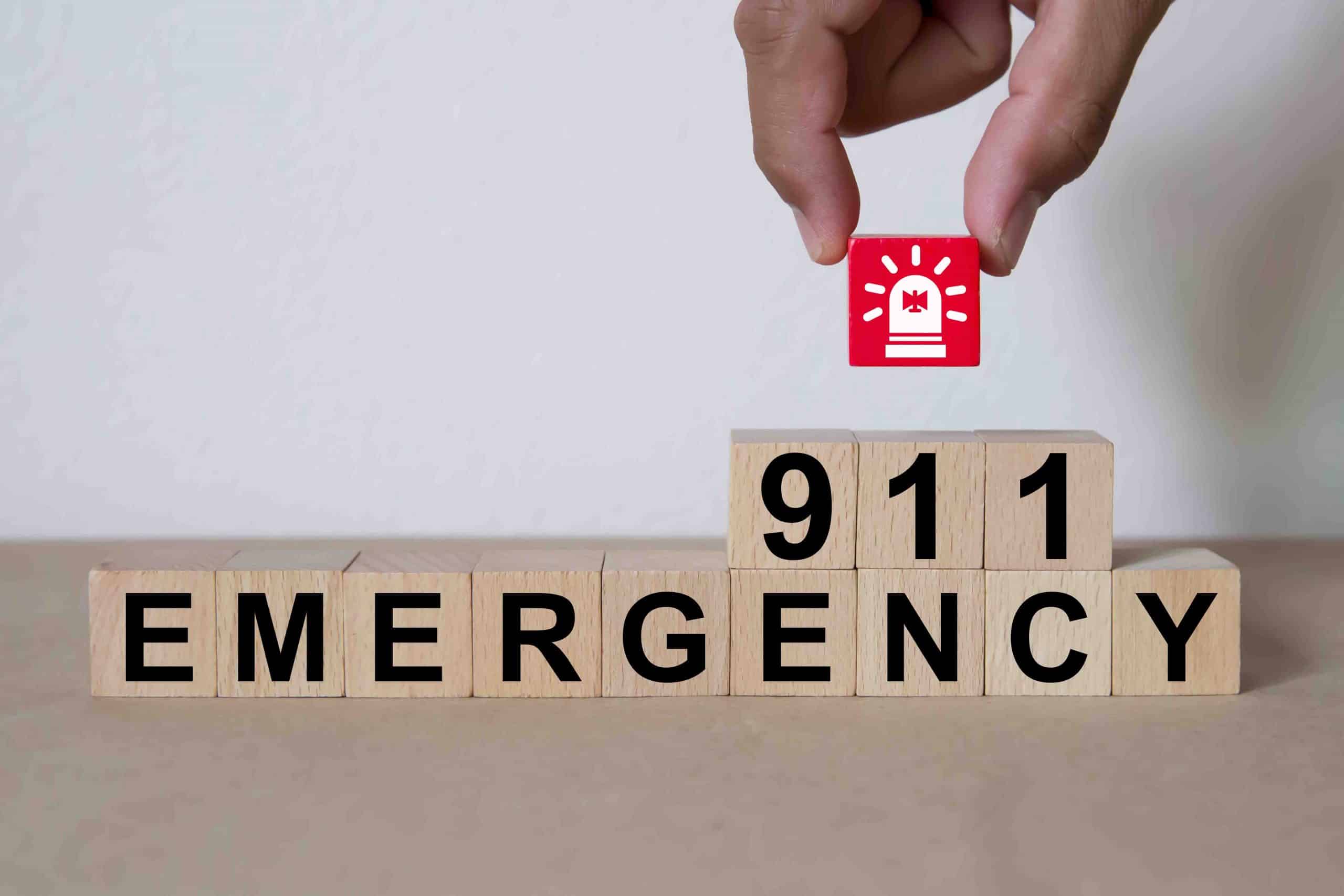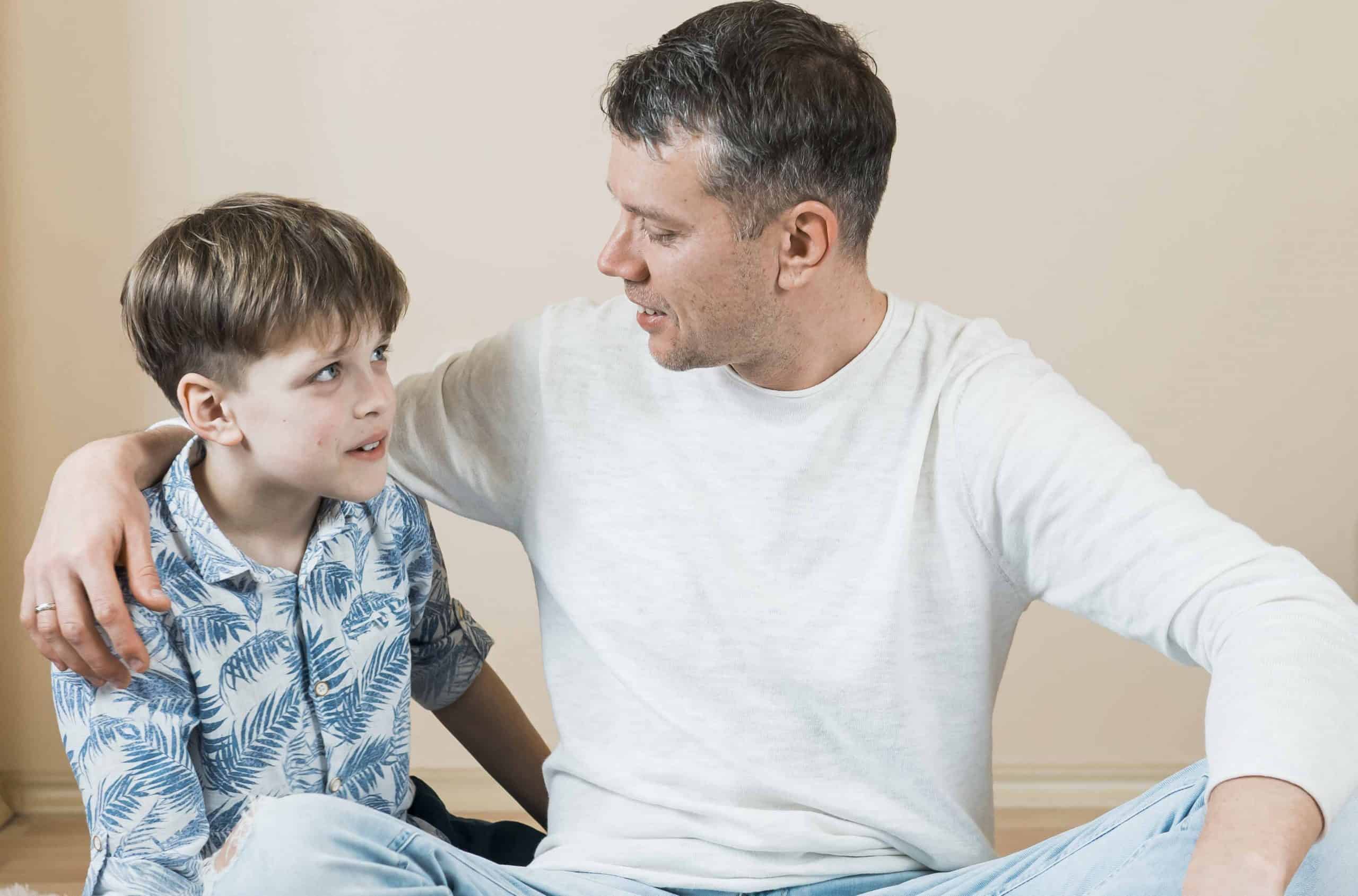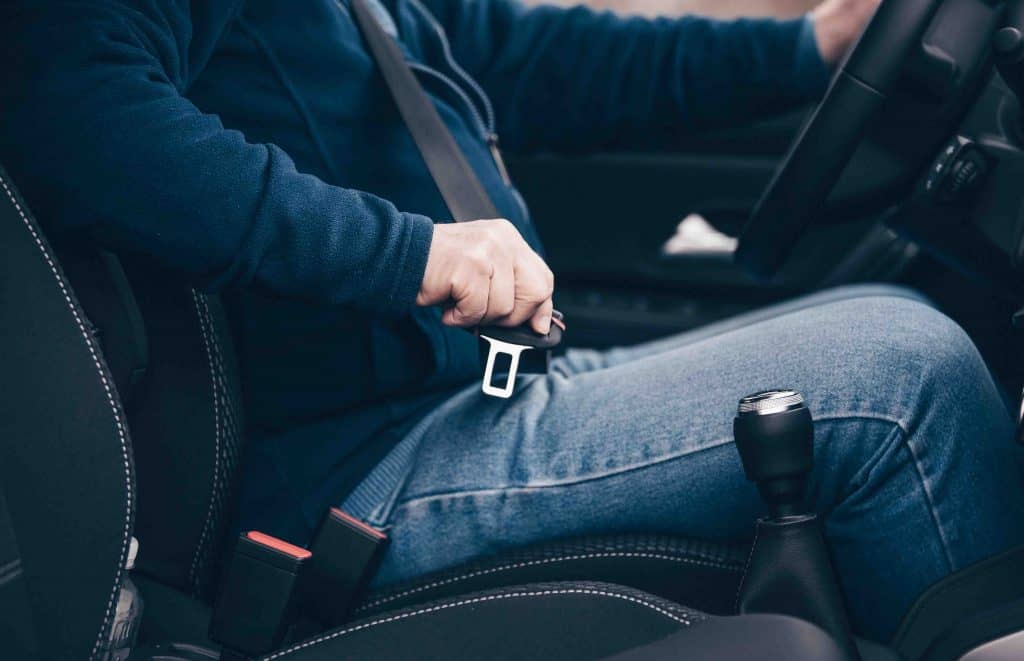As soon as the news of a baby’s arrival comes, parents start preparing for everything. You want to become a better person and teach your kids about life and express your love through spoiling them. Every parent worries about their kid’s safety. Here are 4 important safety rules for kids every parent should teach their kids (with some extra tips).

After all, you want to give the best to your little angel. But between all the fun and milestones, you might be forgetting something, kids’ safety.
Every parent wants their child to be independent, yet they want to be their first line of protection. Kids need a safe space, safety rules, and the proper guidance to explore and develop confidence.

And parents need to have their basics clear before providing a loving and learning environment for their kids. If you agree and are looking for safety rules for kids, this is the article for you.
Introduce safety rules for kids to them through these simple steps. Start the conversation of personal safety and alertness for kids inside and outside the home with these fantastic tips right here.
What are kid’s safety rules outside?
1. Keep contact information on the tips
The very first step of teaching kids about their well-being and safety is informing them about their contacts. As a parent, everyone believes they always know where their toddler is, and they have an eye on their whereabouts. But sometimes life happens, and your child can find themselves in unfamiliar places.
Maybe they were holding your hand at the park while you were talking to another mother, and now they are not there. Or perhaps your babysitter couldn’t find them after they were playing in the backyard. It happens more often than any parent would like to imagine.
To shake this fear off, follow the #1 safety tips for kids every parent needs to know, teaching them contacts. When you know your child knows where to come home and how to call you, you can feel a sense of ease no matter where your child is.
Obviously, you’d still be concerned, but if you know your address and contact number, you’ll keep your phone close.
- Ensure your child memorizes essential information about themselves. Even younger kids would be able to know their complete names and mom’s and dad’s names.
- Kids of ages 3 to 5 are still young to remember this information. They won’t recall a 10-digit number or a full address but make sure you teach them your locality’s name.
- Another tip is to teach kids to call emergency numbers in case they need help. These contacts are easy to remember and will help you feel safe about kids too.

Tip: Teach your kids about emergencies and let them know what isn’t an emergency. Kids are playful, and they might dial an emergency number just because they know it. Tell them if they get lost, it is an emergency, but if they can not find their toy, it isn’t.
- Teach your kids a landmark near your home if they get lost and need to tell someone where they live.
- If you are going out with your kids, it may or may not be crowded; equip kids with information. That means you can keep a note with their name, your name, and contact information so that they can share it with an adult in times of need.
2. Avoid talking to strangers
“Stranger danger” is a term that has been shared with kids of all generations from all over the world. But the term is outdated and isn’t a black or white area, and you need to help your child understand whom to trust. Yes, it is okay for kids to talk to other people, but it is for parents to teach them the boundaries.
- Emphasize the kid’s understanding of what is okay and what isn’t. If you teach your kids that it isn’t okay to talk to strangers, your kids will shut down when anyone approaches. They won’t be able to ask for help if they are lost, they’ll have difficulty making friends, and may shut down in case of an emergency.
- Teach your kids it’s okay to talk to strangers if they have someone they know around or in case they are in trouble. But it is not okay to go anywhere with a stranger. Teach them if a stranger offers something, even if it is their favorite candy, they decline. Going anywhere with a stranger, getting into their vehicle, or accepting anything from a stranger are a big no-no.
- Lead by example to explain the concept of kid’s safety to them. Tell your kids what a stranger might say to lure them in. For example, a stranger might say, “I have your favorite candy in the car.”, “I can drive you, so you reach fast.”, or “Your parents have asked me to pick you up.” Help your kids identify the intention and run to safety.
- Encourage your kids to inform you about interactions throughout the day.

In short, you need to teach your kids three main points. Expert term it as the three Rs which they recommend to teach your kids:
- Recognize: Teach kids to identify what is acceptable and what isn’t.
- Resist: If they recognize anything unacceptable, teach kids to decline, run, and find safety.
- Report: Encourage your kids to inform you about everything. Even if someone has asked them not to tell, they need to tell.
3. Say no to bad touch
As early as you teach your kids about good touch and bad touch, the better it would be. When your child is mature enough to understand the basics of right and wrong, this is one of the top child safety rules you need to teach them.
You have taught your kids about staying careful around strangers, but it’s time to take another step. Even if your kid is as young as three years old, you can talk to them about good and bad touch.
If you are going to tell your kids that only the people they know can touch them, don’t. First, you and your kids see many people, and not all of them may have good intentions.
Second, this concept leaves a lot of room for strangers to manipulate kids. For example, strangers introduce themselves to kids and pretend to be their friends now. Kids believe, in a way, they know them now.
Now, start with educating your kids about good and bad touch. Here are some points to help:
What includes good touch?
- Give your child an example of good touch like holding hands, high fives, shaking hands, and hugging.
- Even though these are good touches, if they make your child uncomfortable, they should disengage.
- Some touches are not comfortable but good for the kid’s safety, like cleaning a wound. But tell your kids there will always be someone looking over them if this sort of thing happens.
- Help your kids understand that there are certain times when specific people are allowed to touch their private parts. But be clear about it, like the doctor during a checkup or a parent, but they need to inform you if they feel uncomfortable.
What includes bad touch?
- Help your kids understand absolutely no one is allowed to hurt them. Even if it leaves a wound/bruise or not, it is not okay for kids or adults to hurt them.
- Explain to them that any kid their age, an older kid, or an adult cannot look at their private parts. They can not even touch them. Similarly, it is not okay if they ask you to touch them.
The next step is to take steps about bad touches.
- If your kids experience any bad touch, ask them to say “No,” “Stop,” and “Don’t touch me.” Even if they yell, it is okay to say it.
- Be one step ahead and explain to your child that if anyone tells them to keep a secret, do not do it. Ask them to immediately inform you about such a person and act so you can take action.
- Encourage your child not to be scared of you or such people. They can yell, kick, run away from them and ask for help from a trusted adult.
4. Stay safe on the road

Children do not just need to be safe from other people; they need to stay safe while going about their daily lives on the road too. It’s the parents’ responsibility to teach road safety to kids, with basic traffic rules, to avoid any mishappenings or accidents. The lack of supervision of an adult shouldn’t be why your kids are scared of a road or feeling unsafe.
Here are the basic of road safety you need to teach your children:
- Before you start explaining any road safety tips to your kids, you need to help them distinguish between traffic signs and traffic lights. It should be easy as kids understand visuals better than auditory directions.
- Next, it’s time to help kids cross a road. When you are standing on one side of the road, look in every direction. First, look right, then left, then right again and if the path is clear, cross the street. But teach them not to rush and take an adult’s hand. (Even if your child learns the rules, an adult should be there to supervise)
- Teach your kids not to play or run near the road. The place is scary, so it’s time to be serious too.
- Ask your child to avoid roads without sidewalks. But if such roads are a part of your regular commute, teach kids to face the traffic while walking with such roads.
- If your kids ride a bike, skateboard, or scooter, you need to equip them with all the safety gear. Explain to them that they always need to wear a helmet and their knee pads. (Tip: You can buy the safety gear your kids really like. It’ll help them wear the gear without fail because they love it.)
What are kid’s safety rules at home?
While the outside world is big and scary, at-home precautions are also a part of a kid’s safety. Here are some tips to help kids stay safe and comfortable at home even if you are not supervising them.
1. Do not open the door for strangers
If you are not home, inform your child to lock the doors after you and keep them secured. If anyone rings the bell or calls them from outside, teach them only to open the door if it is anyone they know or for people who are regulars. If someone they don’t know at the door, instruct them to stay quiet and calm; they do not need to answer the door.
2. Install security cameras
If you have to leave your kids home alone or with a babysitter often, it would help if you have installed cameras. It is crucial to ensure your child’s safety and monitor the people coming in your absence.
3. Explain your security system
If you have a security system at home, it can be of great use for your children when they are not under your supervision. Start by introducing your kid to the importance of security, followed by the basics of your security systems.

They should know how to turn on the alarm and how to turn it off too. Teach your kids about the system codes and panic buttons. But while you teach your kids about your security system, ensure they know all this information is confidential, and no one outside of the family should know about it.
4. Keep medicines in hard to reach areas
Keep any medicine out of the kid’s reach. The only time kids should have access to any medication is when they are supervised or have been given a specific dose to ingest.
That is why doctors, manufacturers, and parents recommend storing medicines in difficult areas for children to reach. If drugs get in the hands of your little ones, it can be a hazardous scenario.
The same thing applies to other chemicals too. Sprays, fertilizers, and cleaning agents should be out of sight and reach of your children. Store them away in a dry place that isn’t easy to approach, and you’ll be good to go.
5. Stay alert around water
Children around age six years and younger should always be allowed to play with water only under supervision to avoid fatal situations. Whether it is a small bathtub or a swimming pool, kids should only be accepted near water if there is an adult (who knows swimming) with them.
You can check the water before kids start playing with it. It should not be too hot to give them a burn or too cold to give them a cold or cause general discomfort. Also, ensure all the appliances and chords are away from water.
If your kid doesn’t know how to swim, keep the inflatable tubes around with other gear like goggles and caps. These floaties come in many shapes, colors, and even in your kid’s favorite characters, so it will be a fun and safe time! But make sure you teach your kids swimming or at least the basics of it.
6. Safety around furniture
Lopsided or loose furniture pieces can cause injuries or even a more considerable hazard. Kids and adults both can get hurt from carelessly handling heavy furniture.
For example, a shaky picture frame or mirror can fall anytime and hurt anyone standing around it. And any vase kept on a low shelf or a wobbly stand can drop anytime.
It is better to keep decorations sturdy and check heavy furniture regularly for maintenance. If everything is maintained and carefully placed, your baby will be safe no matter what menace they create.
7. Cover wires and outlets
Keeping child safety in mind, here is another vital tip every parent needs to follow. Open circuits, switchboards, and wires can lead to major safety hazards, and you do not want to be reckless.

- Before your delivery date is near, make sure your house has a proper grounding, well-maintained electrical devices, and covered electrical switches and circuits.
- Childproof your electrical sockets by covering them with appropriate plastic covers.
- Teach children to stay away from electrical devices without you around.
- Help your kids be more aware of electricity and the risks that come with it.
- Keep all the appliances and wires away from water (sinks, bathroom, and pool).
These are all the safety rules for kids you need to learn, follow, and teach your little ones. They may seem a lot, but they are critical to making your kids feel safe, independent and avoid any unfavorable situation.

I hope you liked this article and found these tips helpful. Here are some excellent articles for you if you want to know more about parenting tips and methods.
- 47 Amazing Aquarius Coloring Pages For Kids & Adults ( Free Download) - August 5, 2024
- 47 Golden 50th Birthday Coloring Pages For Kids & Adults(FREE DOWNLOAD) - August 2, 2024
- 47 Amazing Ireland Coloring Page For Adults & Kids (FREE DOWNLOAD) - August 2, 2024
